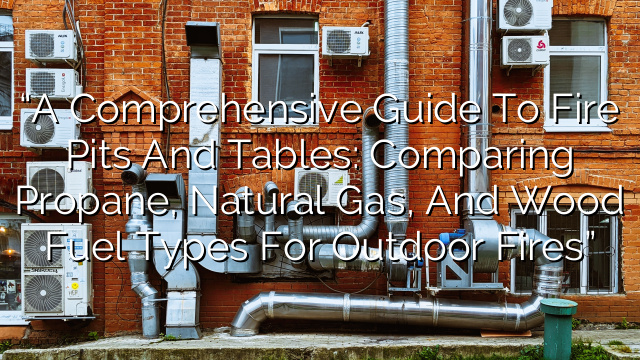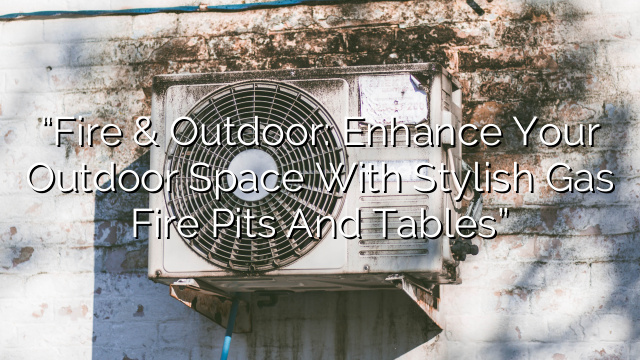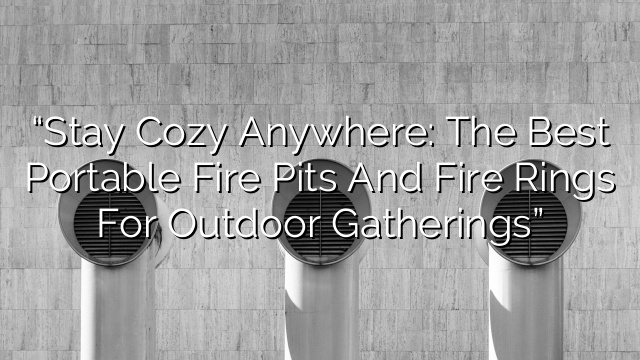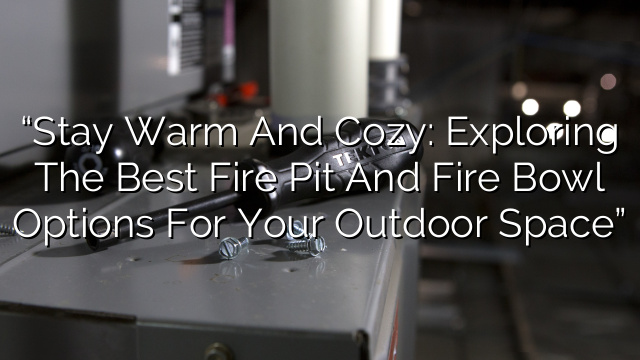Introduction
When it comes to creating a cozy and inviting outdoor space, few things can beat the warmth and ambiance of a fire pit or fire table. These popular outdoor features are not only functional but also make a statement in any backyard or patio.
When choosing a fire pit or table, one of the most important decisions you’ll have to make is the fuel type. The three most common options available are propane, natural gas, and wood. Each fuel type has its own advantages and considerations, and in this comprehensive guide, we’ll compare them to help you make an informed decision.
Propane Fire Pits and Tables
Advantages:
- Convenience: Propane fire pits and tables are extremely convenient to use. They can be easily turned on and off with a simple flip of a switch or push of a button.
- Portability: Propane fire pits and tables are portable, making them ideal for those who like to change the arrangement of their outdoor space or frequently move their fire feature.
- No smoke or sparks: Unlike wood fires, propane fires produce no smoke or sparks, making them cleaner and safer to use.
Considerations:
- Refilling propane tanks: While propane fire pits and tables are convenient, they do require propane tanks that need to be refilled or replaced periodically. This cost and hassle should be factored in when considering this fuel type.
- Flame control: Propane fires may have limited flame control options compared to natural gas or wood fires. However, some models do offer adjustable flame settings.
- Operating cost: Propane is generally more expensive than natural gas or wood. Consider the long-term cost of fuel when deciding on a propane fire pit or table.
Natural Gas Fire Pits and Tables
Advantages:
- Constant fuel supply: If your home or outdoor area is already equipped with a natural gas line, using a natural gas fire pit or table is an excellent option. You won’t have to worry about refilling or replacing propane tanks.
- Flame control: Natural gas fire pits and tables often offer adjustable flame settings, allowing you to customize the size and intensity of the fire according to your preferences.
- Cheaper fuel cost: Natural gas is typically cheaper than propane, making natural gas fire pits and tables a more economical choice in the long run.
Considerations:
- Fixed location: Natural gas fire pits and tables require a fixed gas line, so they might not be as portable as propane or wood-burning options.
- Installation: Installing a natural gas fire pit or table may require professional assistance, especially if you don’t already have a gas line in place.
- Availability of natural gas line: Not all outdoor spaces have access to a natural gas line. Consider the availability and feasibility of installing a gas line before opting for a natural gas fire pit or table.
Wood Fire Pits and Tables
Advantages:
- Ambiance: Wood fire pits and tables provide an authentic, traditional outdoor fire experience. The crackling sound and captivating flames can create an inviting atmosphere.
- Low operating cost: Wood is generally the cheapest fuel option, especially if you have access to free or inexpensive firewood.
- Wide range of designs: Wood-burning fire pits and tables come in a variety of designs and styles, allowing you to find one that matches your outdoor aesthetic.
Considerations:
- Smoke and sparks: Wood fires produce smoke and sparks that can be bothersome to some people. Ensure that your outdoor space has proper ventilation to minimize smoke buildup.
- Fire management: Wood fires require more effort and skill to start and maintain compared to propane or natural gas fires. You’ll need to gather firewood, start the fire, and monitor it throughout the evening.
- Ash cleanup: After the fire has burned out, you’ll need to dispose of the ashes and clean the fire pit or table. This additional maintenance should be taken into account when choosing a wood-burning fire pit or table.
FAQs
1. Can I convert a propane fire pit to natural gas or vice versa?
Converting a fire pit from one fuel type to another is possible, but it should be done by a professional. They will ensure that the conversion is safe and meets the necessary requirements.
2. Can I use wood in a propane or natural gas fire pit?
No, wood should not be used in a propane or natural gas fire pit as it can damage the burner and cause safety hazards. Stick to the designated fuel type for your fire pit.
3. Are fire pits and tables safe to use?
When used responsibly and following the manufacturer’s instructions, fire pits and tables are safe to use. However, it’s important to always prioritize safety, keep children and pets at a safe distance, and never leave a fire unattended.
4. How do I clean a fire pit or table?
Cleaning methods may vary depending on the material of your fire pit or table. In general, you can remove ash and debris with a brush or shovel and wipe down the surfaces with a damp cloth or mild soap and water. Refer to the manufacturer’s instructions for specific cleaning recommendations.
Conclusion
Choosing the fuel type for your fire pit or table is a personal decision that depends on your preferences, needs, and the specific features of your outdoor space. Consider the convenience, cost, and ambiance offered by propane, natural gas, and wood-burning options. Whether you opt for the ease of propane, the constant supply of natural gas, or the traditional charm of wood, a fire pit or table is sure to enhance your outdoor living experience. So gather ’round the fire and enjoy cozy evenings under the stars.














